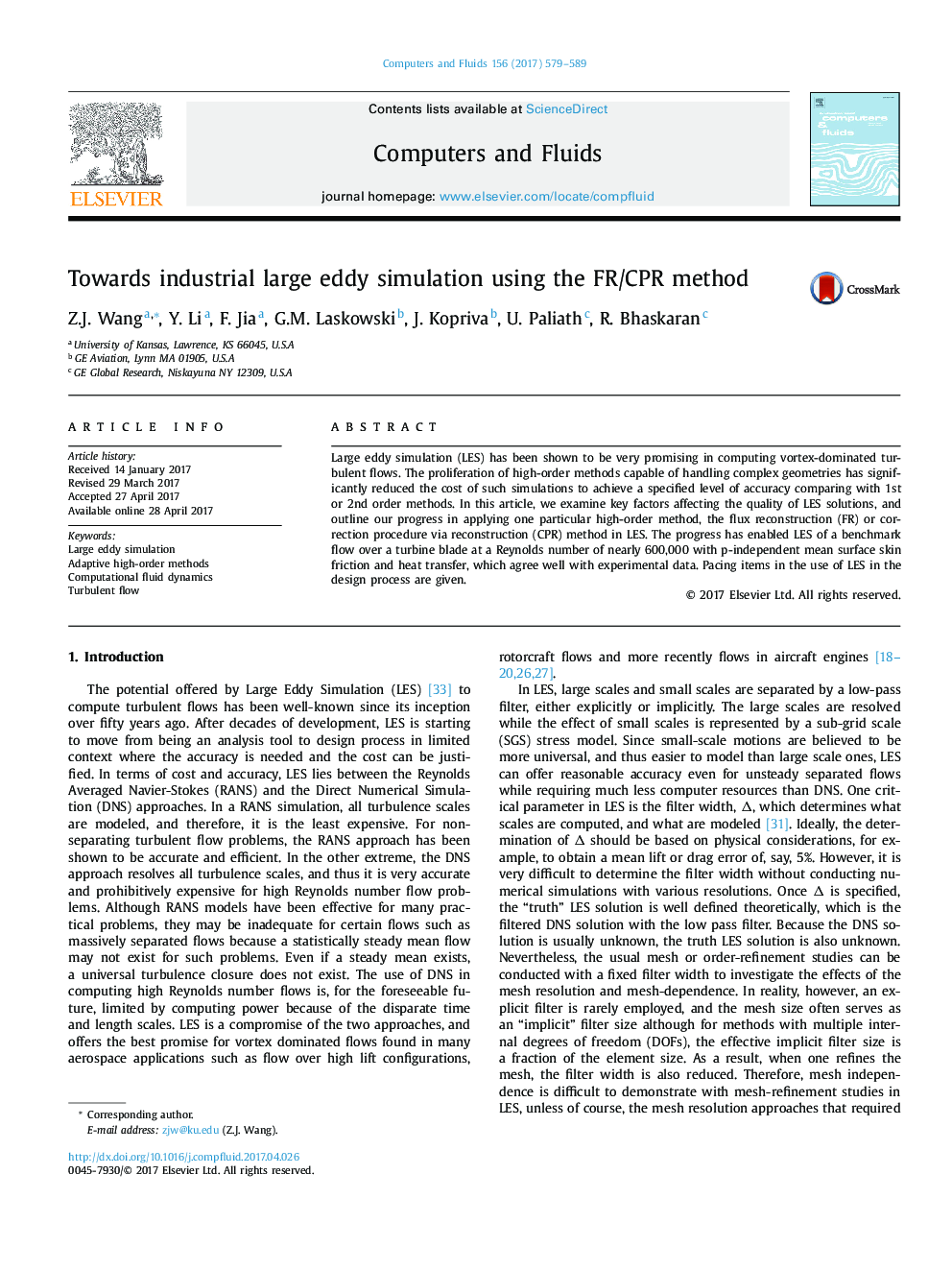| Article ID | Journal | Published Year | Pages | File Type |
|---|---|---|---|---|
| 5011781 | Computers & Fluids | 2017 | 11 Pages |
Abstract
Large eddy simulation (LES) has been shown to be very promising in computing vortex-dominated turbulent flows. The proliferation of high-order methods capable of handling complex geometries has significantly reduced the cost of such simulations to achieve a specified level of accuracy comparing with 1st or 2nd order methods. In this article, we examine key factors affecting the quality of LES solutions, and outline our progress in applying one particular high-order method, the flux reconstruction (FR) or correction procedure via reconstruction (CPR) method in LES. The progress has enabled LES of a benchmark flow over a turbine blade at a Reynolds number of nearly 600,000 with p-independent mean surface skin friction and heat transfer, which agree well with experimental data. Pacing items in the use of LES in the design process are given.
Related Topics
Physical Sciences and Engineering
Engineering
Computational Mechanics
Authors
Z.J. Wang, Y. Li, F. Jia, G.M. Laskowski, J. Kopriva, U. Paliath, R. Bhaskaran,
